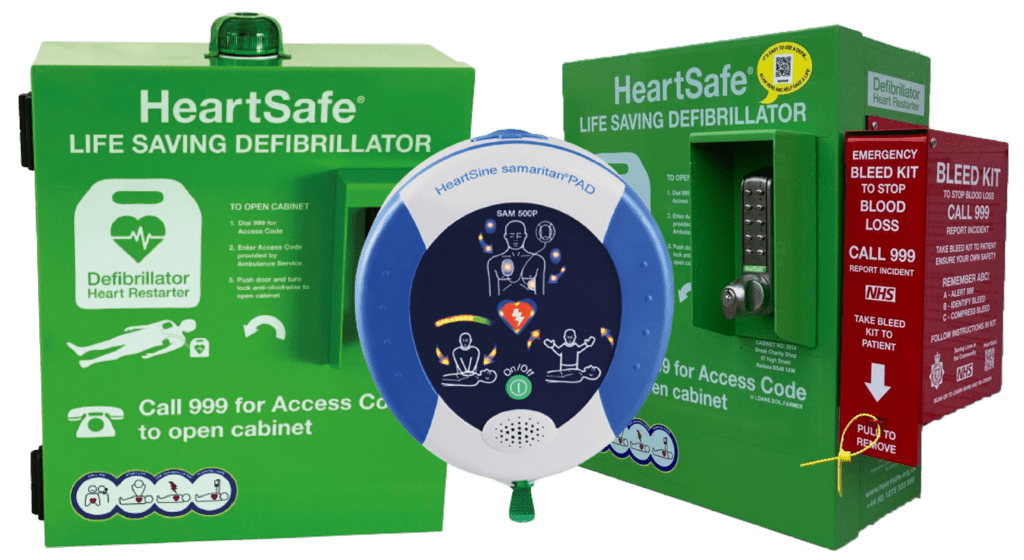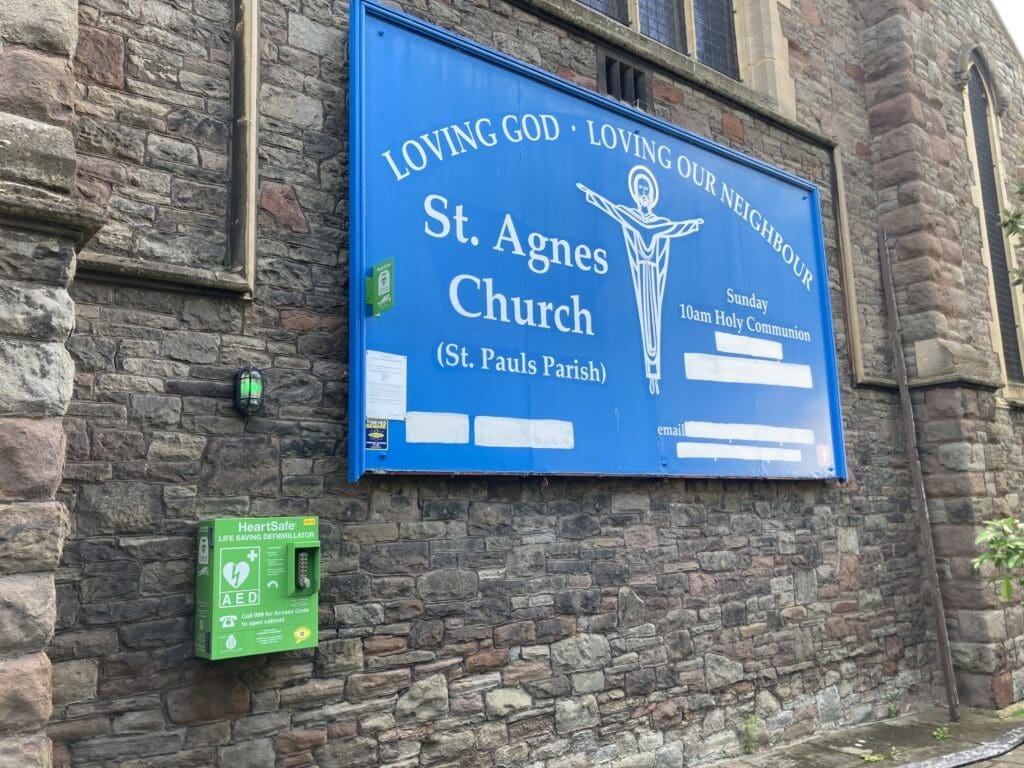How To Use A Defibrillator

Understanding an Automated External Defibrillator (AED)?
In an effort to enhance community safety and preparedness, the initiative to make Automated External Defibrillators (AEDs) more accessible and known to the public has led to the creation of comprehensive AED locator maps. These maps serve a critical role in emergency situations, particularly during instances of sudden cardiac arrest, where the timely use of an AED can significantly increase the chances of survival. Here’s a guide on how to find your local defibrillator, emphasising the importance of being prepared ahead of time.

Locating the nearest defibrillator
AEDs are often located in public spaces such as schools, airports, malls, and sports arenas. They are typically stored in clearly marked, easily accessible green cabinets. Familiarising yourself with AED locations in places you frequently visit can be lifesaving.
Before using an Automated External Defibrillator
Ensure Safety
Make sure the area is safe for you and the victim. Avoid using AEDs in wet or damp conditions.
Call for Help
Dial emergency services immediately or instruct someone else to do so.
Perform CPR
Start CPR if trained and able. If another responder is present, one can perform chest compressions while the other prepares the AED for use.
Using an AED
1. Power On the AED
Turn on the AED as soon as it’s retrieved. Most units have a simple power button or automatically power on when opened.
2. Expose the Chest
Remove or cut through the victim’s clothing to expose their bare chest. Dry the chest if it’s wet, and shave the area if excessively hairy to ensure the pads make good contact.
3. Attach the Pads
Place one pad on the right side of the chest, just below the collar bone. Place the other pad on the lower left side of the chest. Pads should be placed as indicated by the diagrams on their packaging.
4. Ensure No One is Touching the Victim
Before the automatic defibrillator analyses the heart rhythm or delivers a shock, ensure that no one is touching the victim. The AED will prompt you to stand clear.
5. AED Analyze Heart Rhythm
Allow the AED to analyse the heart’s rhythm. Follow the AED’s voice instructions closely. Do not touch the victim during this analysis.
6. Deliver Shock if Advised
If the AED determines a shock is needed, it will instruct you to press the shock button. Again, ensure nobody is touching the victim, then press the button.
7. Continue CPR
After the shock, or if no shock is advised, continue CPR until emergency medical services arrive or the person shows signs of regain consciousness.
After using an AED
Leave the AED attached
Keep the AED pads in place and the device turned on so it can monitor the victim’s heart rhythm.
Report the Incident
Inform emergency services that an AED was used. Provide any information requested.
Maintenance Check
Notify the AED’s custodian so the device can be checked and serviced for future use.
AEDs are designed to be user-friendly, empowering anyone to take action during a cardiac arrest emergency. Remember, the prompt use of an AED, combined with CPR, can save lives. Take the time to familiarise yourself with these steps, and always be prepared to help in an emergency.
Take a look at our video tutorials for an easy and friendly guide on using a defibrillator!

